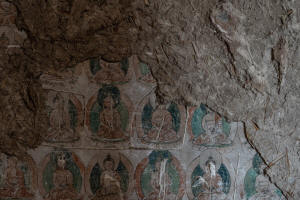|
Extreme rainfall in Dunhuang and Zhangye in China's Gansu
province has put UNESCO-listed world heritage sites at risk,
with cave monasteries dating back to the 4th century already
damaged, environmental group Greenpeace said.
Rainwater leaks and rising humidity have damaged ancient cave
paintings, including those in the famous Mogao grottoes, it
said, and some caves have even collapsed.
"Spikes in humidity, flash floods, and cave-ins are already
happening," said Li Zhao, a senior researcher in Greenpeace East
Asia's Beijing office.
Greenpeace said that while total precipitation has increased in
Gansu since 2000, the number of rainy days has actually fallen,
meaning that individual bouts of rainfall have become more
intense. Temperatures in the province have also risen faster
than the global average.
China is conducting a nationwide cultural heritage survey, but
Li warned that some of the country's treasures could already be
gone by the time it is completed.
"The sites we looked at include some of the most well-funded,
best-staffed cultural heritage sites in China," Li said. "There
are hundreds of less-funded, less-studied sites all around China
that are facing these same risks."
Gansu is not the only region at risk.
Higher levels of rainfall in the normally arid northern province
of Shanxi have also taken their toll on ancient buildings, some
of which are more than 1,000 years old, said Friends of Nature,
a Beijing environmental group, last month.
The Jinci Temple and Tianlongshan grottoes, both national
heritage sites in Shanxi, have collapsed, and old towers and
walls in the province have suffered damage due to unusually
heavy rain, it said.
(Reporting by David Stanway; Editing by Bernadette Baum)
[© 2023 Thomson Reuters. All rights
reserved.] Copyright 2022 Reuters. All rights reserved. This material may not be published,
broadcast, rewritten or redistributed.
Thompson Reuters is solely responsible for this content.

|
|




